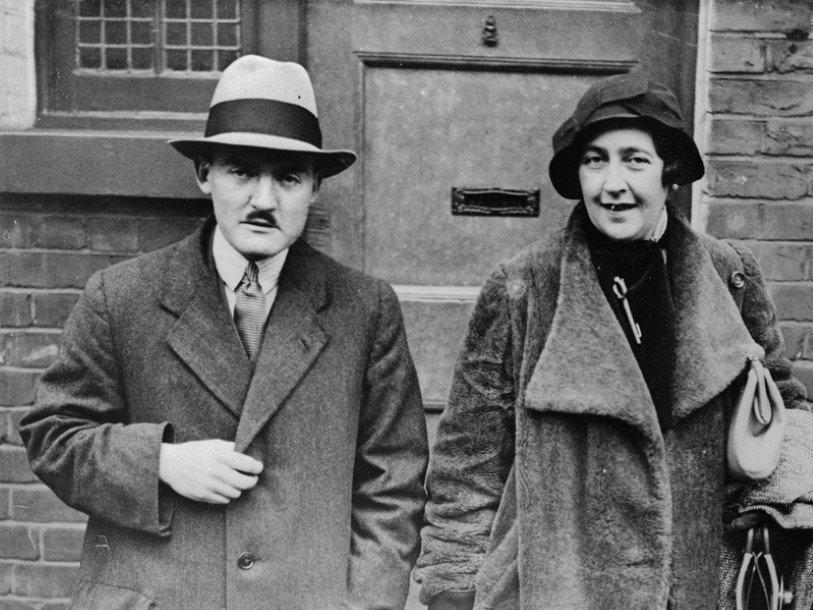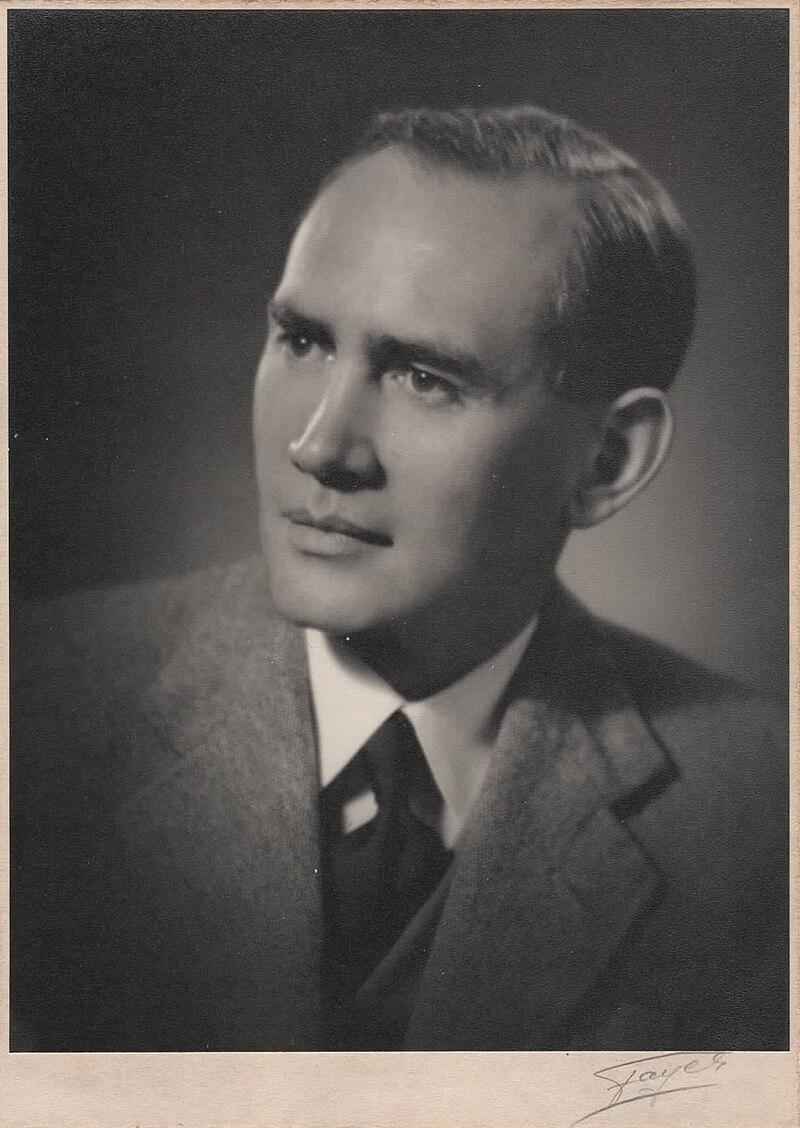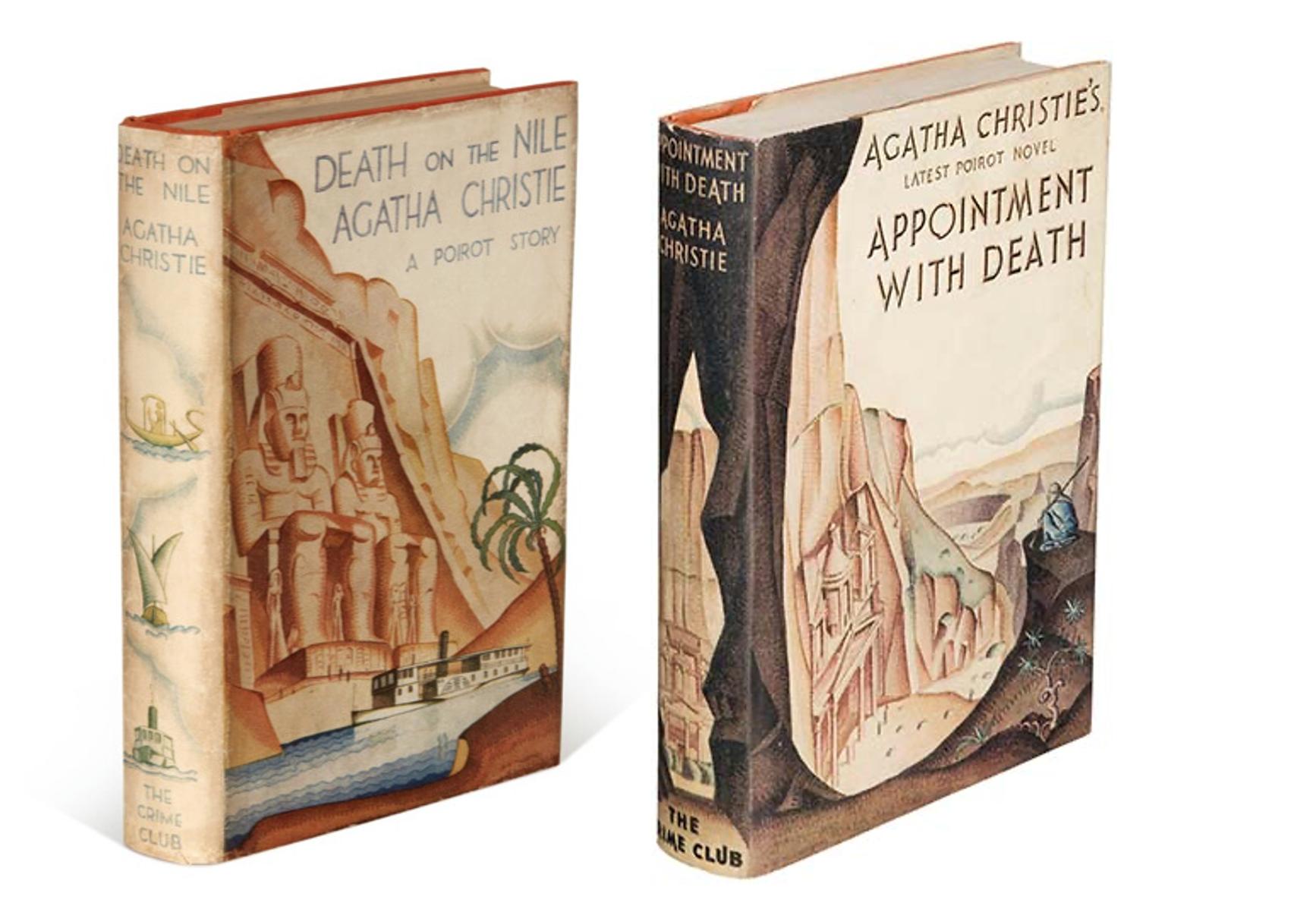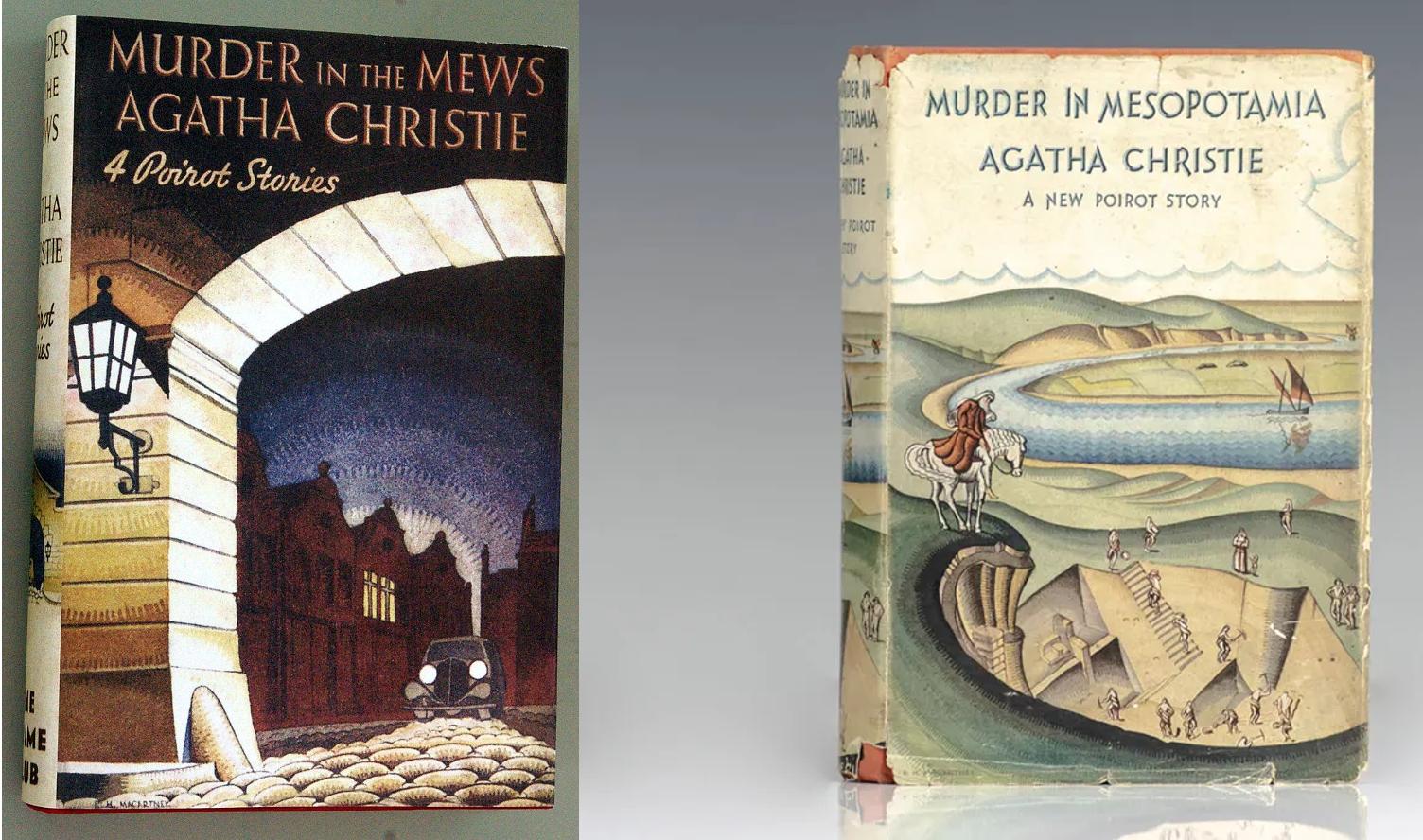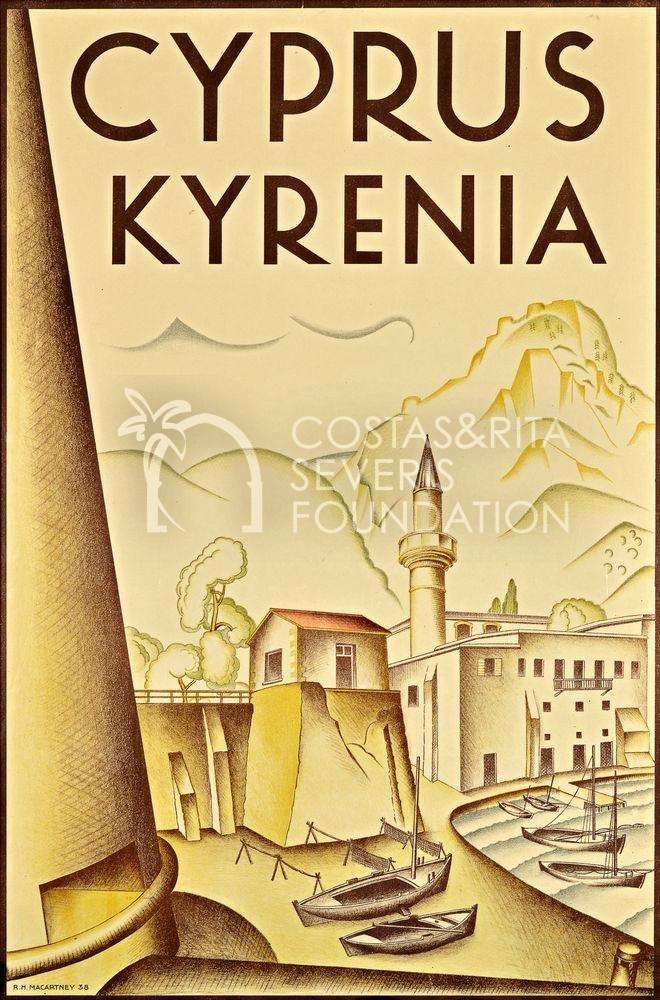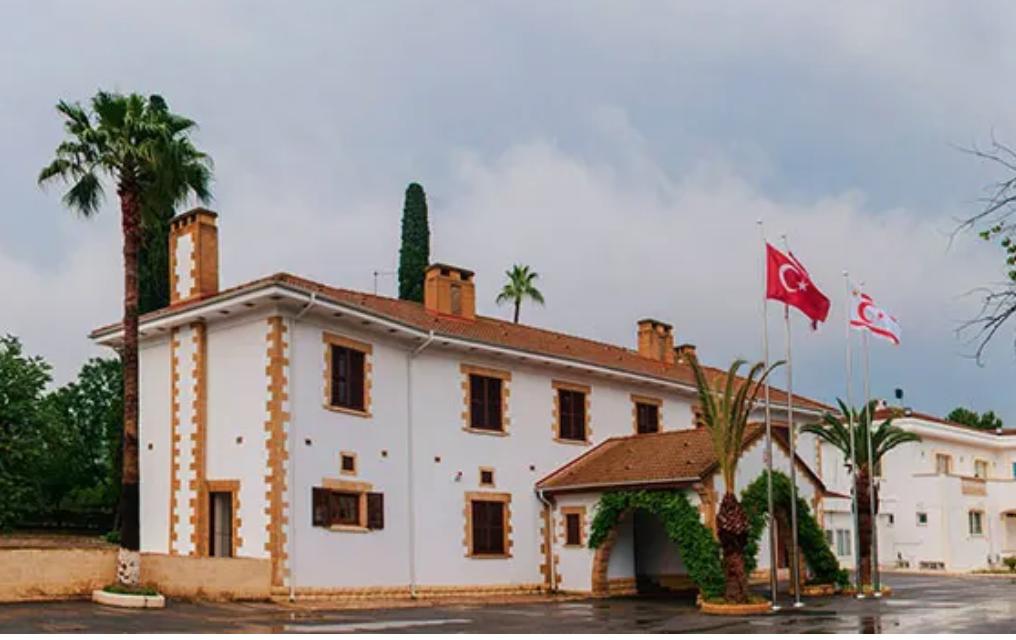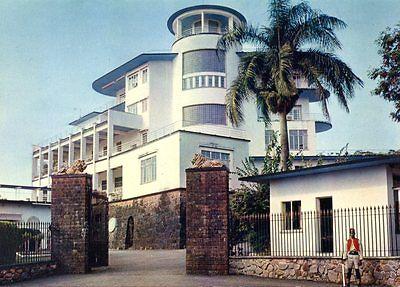Entering Finikoudes from the west, i.e. from Europe Square and Larnaca Municipality, you will be struck by the central police station complex that greets all visitors to the town's seafront.
It is characterised by the 'pointed' arches of the ground floor and the round tower on the corner that dominates the whole building. This tower, so clearly visible, symbolises the British Empire and its willingness to defend its borders. A rather strange symbolism for an independent Cyprus. But first things first.
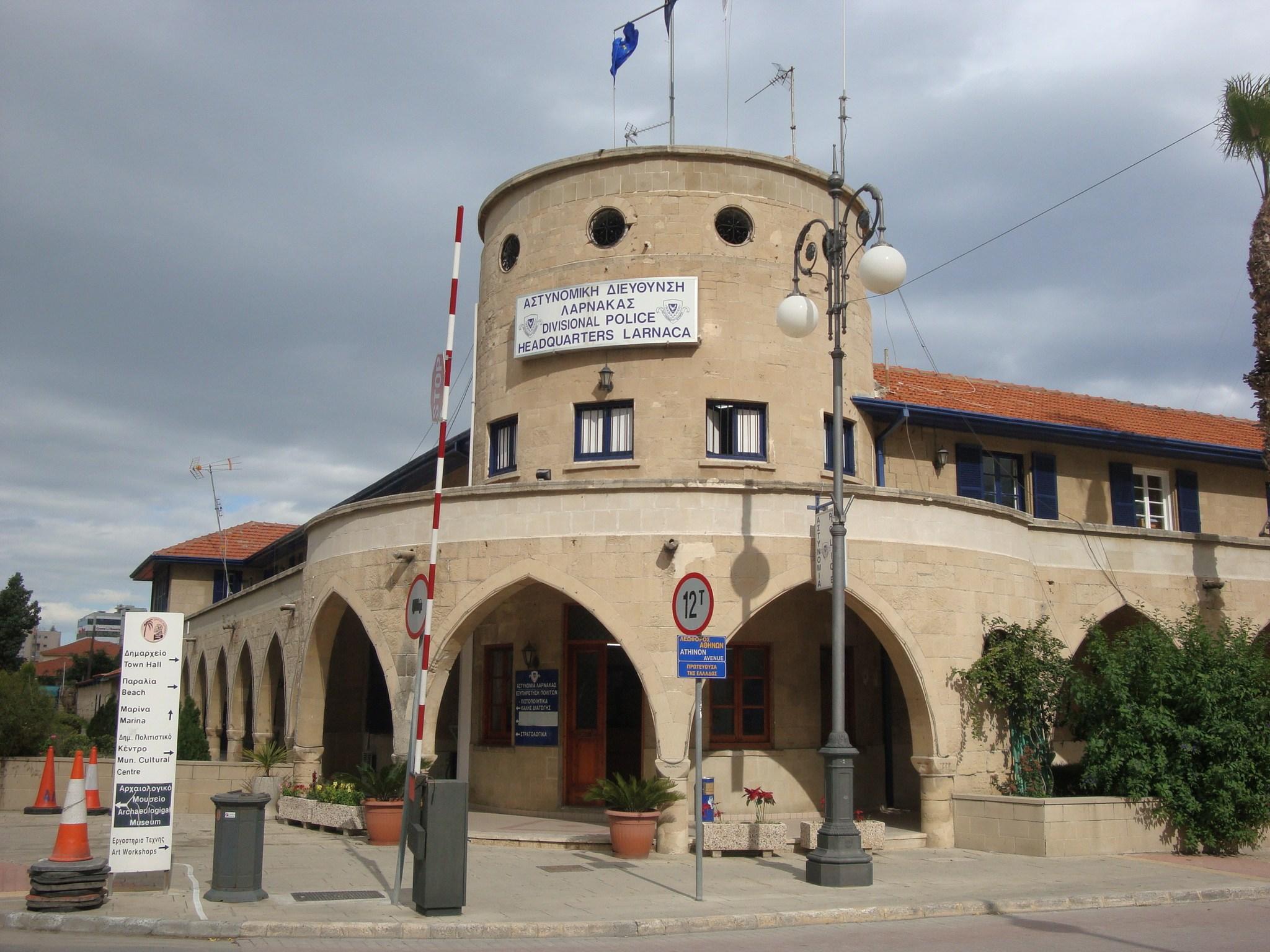
Martello Tower
The Larnaca Central Police Station building is located on the corner of Athens Avenue and Archbishop Makarios III Avenue. Its key location near the port has made it part of the city's vital infrastructure.
In 1940, the architect Robin Halliday Macartney designed the Larnaca Police Headquarters building on this site. It has two wings that meet at right angles. At the junction of the two wings there is a tower that rises above the roofs of the buildings. It is circular in plan and its appearance is an unmistakable reference to an important element of 19th-century British defensive architecture, the so-called Martello towers.
Martello towers were small defensive structures built en masse by the British in the early 19th century in response to the threat of invasion by Napoleon Bonaparte. They took their name from the circular defensive structure at Cape Mortella on the island of Corsica. The British realised the full potential of such a structure during the siege of Saint-Florent in 1794. During the French Revolutionary Wars, the Cape Mortella tower was attacked by two British warships. A fierce battle ensued. The British eventually managed to capture the tower, but only after suffering heavy casualties. The defensive capabilities of the structure impressed the attackers so much that they decided to use similar structures for their own defence. Such towers were called 'Mortello' after the name of Cape Mortella.
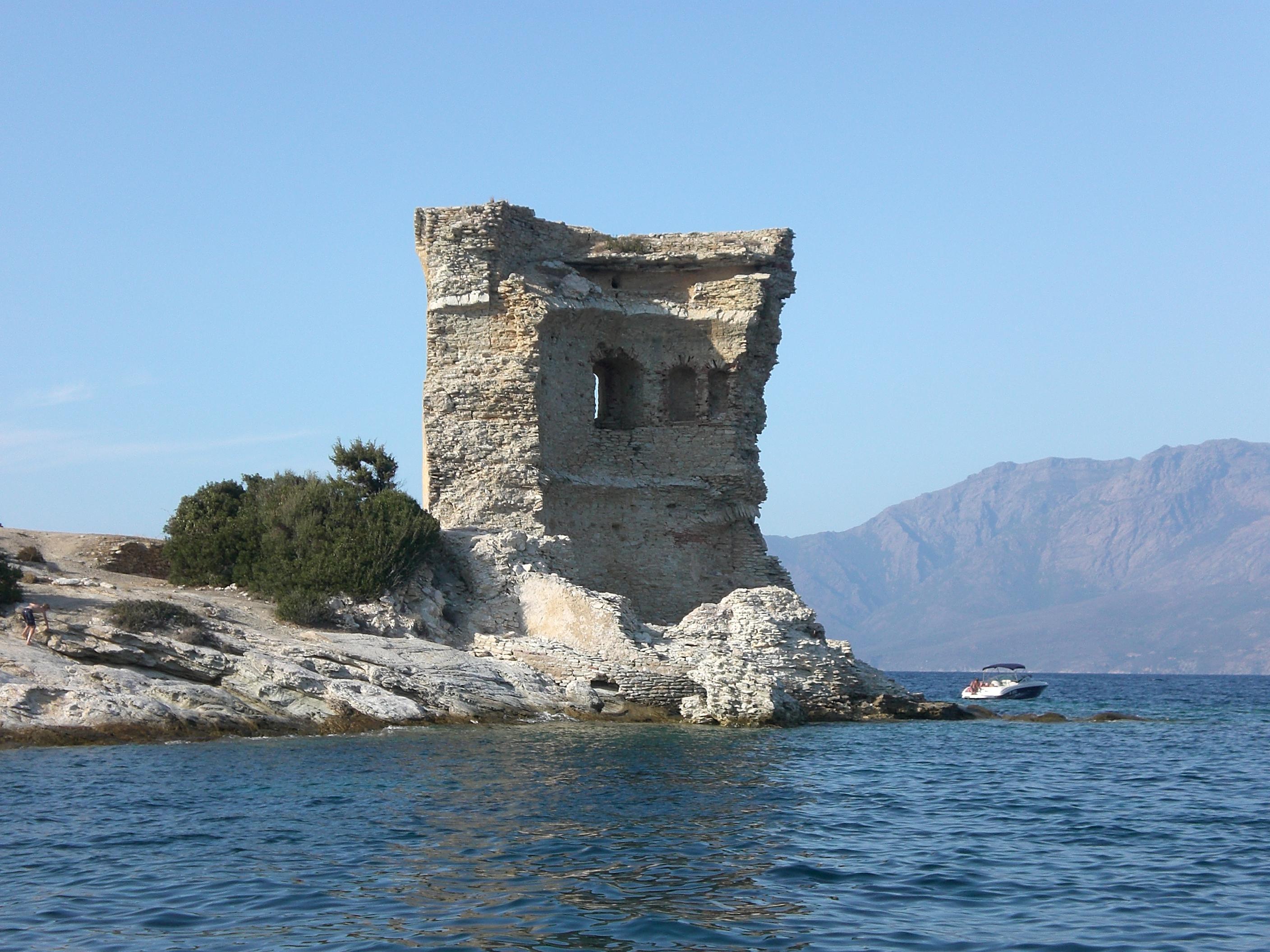
The ruins of the same tower at Cape Mortella
Around 150 of these towers were built across the British Isles. They were used both for defence and as an early warning system: each tower was built within sight of a neighbouring tower so that news of an invasion could be easily transmitted.
Martello towers were usually around 12 metres high and their walls were 2.5 metres thick. The interior of a classical martello tower consisted of two floors, sometimes with an additional basement. The ground floor was used to store ammunition and provisions. The garrison, no more than 24 men, lived on the first floor, which was divided into several rooms and had fireplaces built into the walls for cooking and heating.
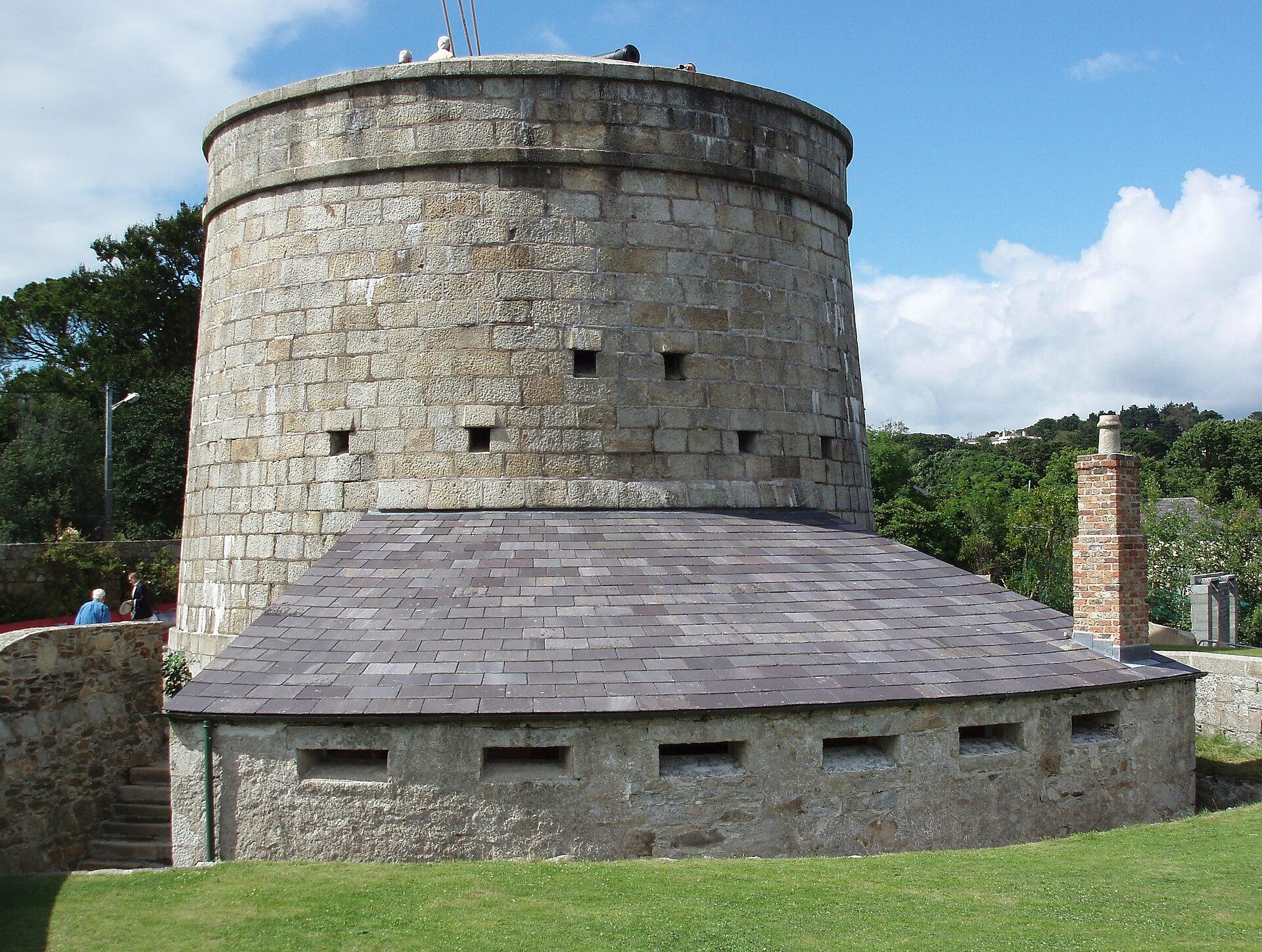
Martello Tower, Killiney, Ireland
In the first half of the 19th century, the British government was so fascinated by the defensive potential of Martello towers that it decided to build them throughout the empire. Towers were built in Australia, Canada, South Africa, Sri Lanka and Mauritius, Sierra Leone and so on. The project to strengthen the defences continued until the 1870s, when the advent of more modern weaponry rendered the martello towers obsolete.
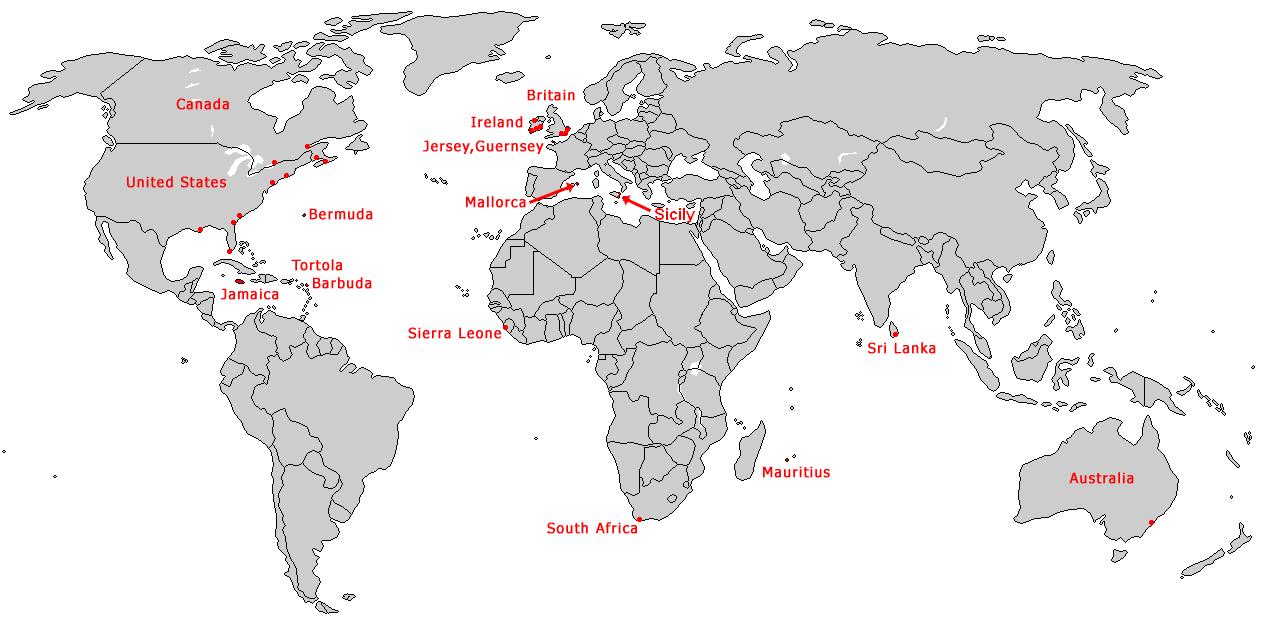
Map of the location of Martello Towers in the world
The Martello Tower has been celebrated in literature. Dublin Tower is famous for being the setting for the first chapter of James Joyce's novel Ulysses.
Solemnly he [Bull Mulligan] strode forward and ascended the round gun emplacement. Turning round and round, he blessed the tower, the surrounding shore and the awakening mountains three times. Then, seeing Stephen Dedalus, he leaned towards him and began to cross the air rapidly, gurgling his throat and jerking his head. Stephen Dedalus, angry and sleepy, leaned back on the last step and looked coldly at the twitching, gurgling face that blessed him, long as a horse's, and at the boneless hair, whitish as if stained with light oak" ('Ulysses', episode 1).
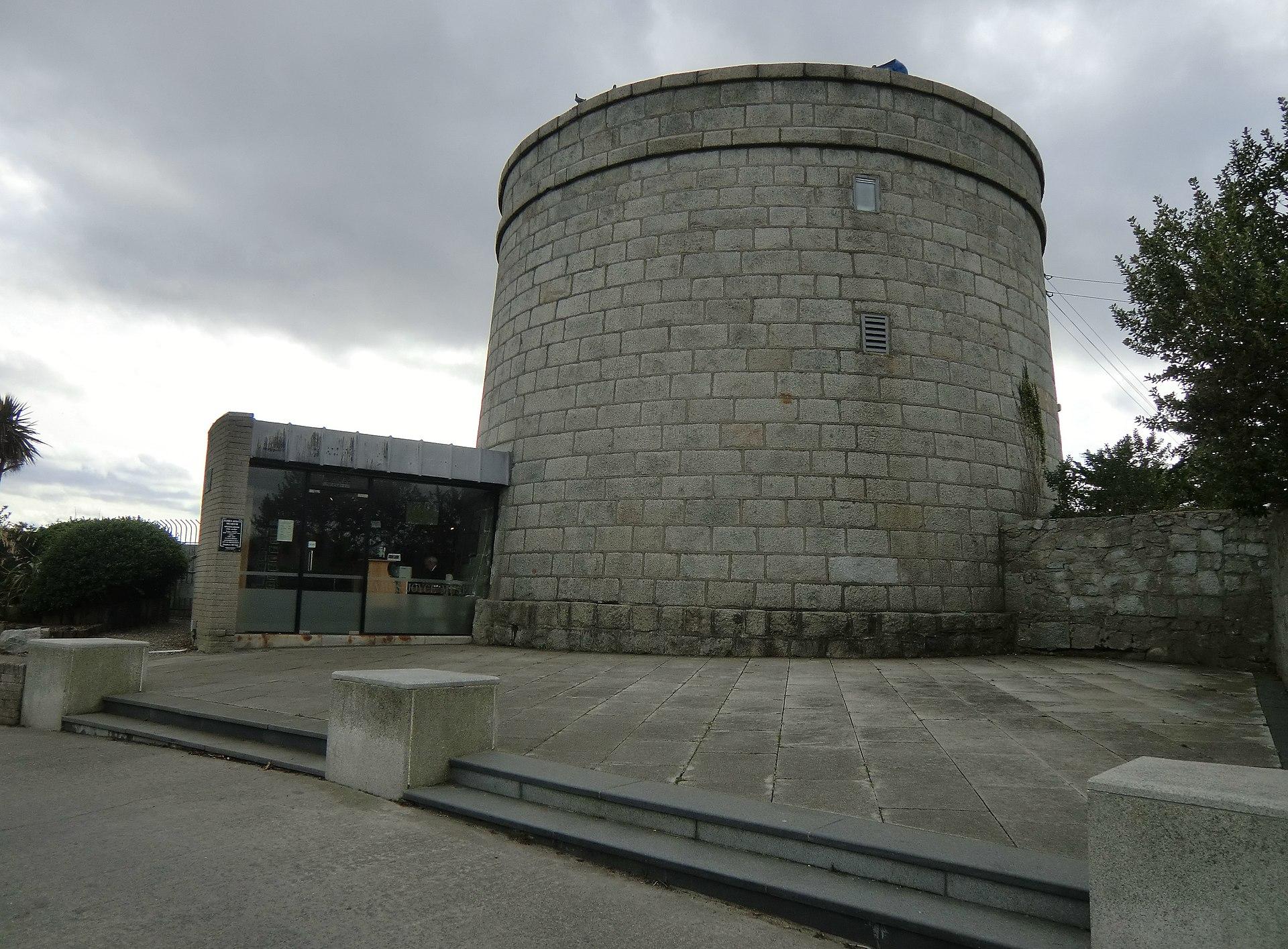
The Tower of Martello, where the great writer lived
According to the architect Macartney, who designed the police station, the tower that dominates the building no longer had any defensive function. This would have been strange for the mid-twentieth century. He used the image of the Martello Tower as a defensive structure from the heyday of the British Empire, a symbol of fortified frontiers and imperial power.
The author
Architect and artist Robin Halliday Macartney deserves to be better known.
I find <...> our new architect Mac, whom I hardly know yet. In a few days we are to leave on a three-month expedition to survey the area in search of suitable excavation sites.This is an extract from the autobiographical book 'Tell Me How You Live' by the famous author Agatha Christie. The book describes an archaeological expedition to the Middle East led by the author's husband, Max Mallowan.
Max Mallowan and Agatha Christie
Under the name Mac in the book, she produced Robin Halliday Macartney, who joined the expedition as the architect of the archaeological mission. In the book, Macartney is initially portrayed as a taciturn, reclusive and shy young man, constantly scribbling in his diary and showing no interest in life in the Middle East. Despite the impression that Macartney made on the writer, it is difficult to describe him as a dull and limited man.
Ниле» и «Свидание со смертью» (все четыре книги – о приключениях Эркюля Пуаро).
Robin Halliday Macartney
He was born in 1911 in Kashgar, China, into the family of the British Consul General. In 1918 the whole family returned home and settled on the island of Jersey.
Macartney loved archaeology, a love he inherited from his father, who collected Chinese antiquities. Robin enrolled at the School of Archaeology in London, where he specialised as an architectural archaeologist. In 1934 he was chosen by the scholar Max Mallowan to be the architect for an archaeological mission to Syria. Mallowan had a rule of choosing his architect from among the young graduates of the school. Macartney appealed to him because of his reticence.
I can't imagine what it's like to be in the desert with a man who never stops talking! I chose him because he seemed silent to me," Agatha Christie would later say of her husband.From the architect in the archaeological mission in the first place required to draw maps and plans, sketch the findings, which Macartney and was engaged.
However, this working relationship with the Mallowan family later developed into a friendship. Between 1936 and 1938, Macartney designed covers for four of Agatha Christie's novels: 'Murder in Mesopotamia', 'Murder in a Passing Yard', 'Death on the Nile' and 'Date with Death' (all four books are about the adventures of Hercule Poirot).
Normally, cover designers would choose the most exciting moment in a book to attract customers. But Macartney instead depicted the setting of the novel, replacing suspense and drama with a sense of immersion in the book's atmosphere. Stylistically, Macartney used simple forms. This recognisable style would be used in much of his later work.
For example, in this poster advertising a holiday in Kyrenia.
In 1937-1938 Macartney took part in an archaeological expedition to Cyprus with the Australian scientist James Stewart, where he excavated the area around Bellapais Abbey and the village of Vouni. It was the first time the architect had been on the island. In 1939 he managed to get a job in the Public Works Department of the British administration in Cyprus. He worked in this position for seven years.
The island owes him several important buildings
At the end of the 1930s, it was decided to build a residence for the British Commissioner of the Province of Nicosia, Leslie Stewart Greening, in Nicosia, right next to the Quirini Bastion. The project was designed by Robin Macartney. In order not to disturb the historic appearance of the bastion or obstruct the view of the monument from below, the Department of Antiquities defined a line beyond which the new building could not extend. The side wings of the building were therefore moved slightly inwards.
In 1960, the building became the official residence of Fazil Küçük, Vice-President of the Republic of Cyprus. Since 1983, when the Turkish Republic of Northern Cyprus was proclaimed in the occupied territories, the building has housed the office of the President of the TRNC.
In 1938 Macartney designed the main and residential buildings of the English School of Nicosia. Both buildings were completed in 1941. His other projects in Cyprus included the residence of the medical superintendent of the Cyperunda Sanatorium, extensions to the Nicosia Hospital and additional court buildings in the capital. Macartney also proposed to the island's administration the construction of workers' housing in the centre of each town, but the idea was not supported by the authorities, who feared that the concentration of proletarians in one place would lead to unrest and protests.
In 1946, the architect was transferred from Cyprus to another colony, Sierra Leone. There he took up the post of Chief Architect of the City and Head of the Town Planning Department. Macartney owns three buildings: the first terminal of Freetown International Airport, Government House, which became the official residence of the President of Sierra Leone after independence, and a residential building for the rest of the authorities.
Sierra Leone Government House
In 1954 Macartney was transferred to Nyasaland (now Malawi), but nothing is known of his work there. He retired and lived with his wife in Portugal. The architect died of cancer in 1973.
Read also:

